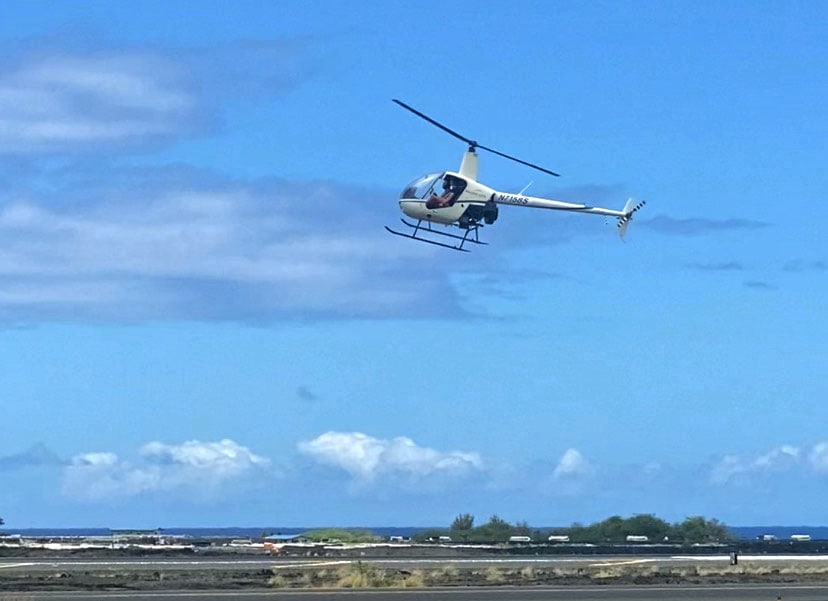Learning how to conduct a touchdown autorotation is an essential part of pilot training that gives one the confidence for success. The maneuver requires the ability to manage your energy stored in altitude, airspeed, and rotor RPM to bring the aircraft down to a soft landing without the use of any engine power.
Ben Fouts, President and Owner of Mauna Loa Helicopters.
Helicopter flying is an exhilarating experience, offering student pilots a unique sense of freedom and control in the air. Mastering various maneuvers and techniques required to safely operate a helicopter is no easy feat. Among these maneuvers, the full-down stands out as a fundamental skill that every helicopter pilot should learn. In this article, we’ll explore what full-downs are, why they are important, and how mastering the maneuver can enhance a student pilot’s skills and confidence.
Understanding Full Downs
A full-down, also known as a full autorotation or power-off landing, is a critical emergency procedure in helicopter flying. It involves landing the helicopter safely without engine power by utilizing the autorotation principle. During the autorotation, the helicopter’s blades continue to spin as air flows upward through them, providing life even when the engine is not running.
Importance of Learning Full Downs
- Emergency preparedness
Full-downs are primarily taught as an emergency procedure in the event of an engine failure. While rare, engine failures can occur due to mechanical issues, fuel starvation, or other unforeseen circumstances. In such situations, the ability to perform a full down safely can mean the difference between a controlled landing and a catastrophic accident. - Safety
Even if engine failure is unlikely, learning full-downs instills a deeper understanding of helicopter aerodynamics and emergency procedures, contributing to overall flight safety. Pilots who are proficient in full-downs are better equipped to handle unexpected challenges and emergencies that may arise during flight. - Confidence and Skill Development
Mastering the full-down requires precision, coordination, and quick decision-making—all essential skills for helicopter pilots. By practicing this maneuver, student pilots will build confidence in their abilities to handle challenging situations and make split-second decisions under pressure. This confidence translates into safer and more efficient flying in all aspects of helicopter operations.
Training and Practice
Learning to perform full-downs requires thorough training under the guidance of experienced flight instructors. At Mauna Loa Helicopters you will start in ground lessons about understanding aerodynamics and principles behind autorotation before progressing to practical flights. During the flight training, student pilots will practice simulated engine failures and full-downs at various altitudes and airspeeds to develop proficiency and muscle memory for check rides.
As a helicopter student pilot, mastering autorotations is not just a skill—it’s a necessity.
Whether flying for recreation, transportation, or professional purposes, every helicopter pilot should prioritize learning this essential maneuver. By mastering full-downs, pilots enhance their emergency preparedness, safety awareness, confidence, and overall proficiency in helicopter operations. Ultimately, investing time and effort in mastering the full-downs is an investment in safer and more confident flying for pilots and passengers alike.

